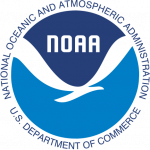A Coupled Marine Enviromental Assessment and Prediction System for the Southeastern U.S. Coastal Ocean in Support of Effective Marine Ecosystem-Based Management, Efficient Marine Operations, and Resilient Coastal Communities
Sponsor: National Oceanic and Atmospheric Administration

Collaborators
SECOORA: Debra Hernandez
Florida Fish and Wildlife Conservation Commission: Alina Corcoran, Ryan Gandy
Florida Institute of Technology: George Maul
Georgia Institute of Technology: Fumin Zhang
Mote Marine Laboratory: James Locascio et al.
North Carolina State University: Ruoying He, Joseph Zambon
Roffer’s Ocean Fishing Forecasting Service, Inc.: Mitchell Roffer
South Atlantic Fishery Management Council: Roger Pugliese
South Carolina Dept. of Natural Resources: Amy Fowler et al.
University of Georgia: Catherine Edwards et al.
University of Miami: Lynn (Nick) Shay
University of North Carolina Chapel Hill: Harvey Seim
University of North Carolina Wilmington: Jennifer Dorton, Lynn Leonard
University of South Carolina: Dwayne Porter et al.
University of South Florida: Robert Weisberg et al.
Funding Period
June 2016 – November 2021
Description
Enhance and operate a Coupled Marine Environmental Assessment and Prediction System. SECOORA will work with members at NCSU to: 1) sustain NCSU’s South Atlantic Bight Gulf of Mexico (SABGOM) ocean circulation daily N/F modeling system; 2) establish the full couplings of wave (SWAN), atmosphere (WRF) and ocean circulation (ROMS) models, and generate regional, high resolution nowcasts and forecasts of ocean circulation, waves, marine weather, lower trophic level marine ecosystem predictions and other value added products; 3) implement into the prediction system a routine data assimilation of satellite-observed sea surface temperature and sea surface height, glider-measured subsurface temperature and salinity, HFR-measured surface currents and other environmental data collected in regional fishery independent surveys; 4) continue model skill assessment for marine environmental variables through appropriate comparisons with independent (non-assimilated) observations (e.g., mooring observations). Working with SAFMC, the team will also start developing the interface between NCSU’s oceanographic modeling system and Ecopath as well as other higher trophic level ecological/fishery models. Through this work, SECOORA will implement an advanced regional marine environmental assessment and prediction capability over the entire SECOORA domain with associated error estimates, and update and transmit information to stakeholders in a timely and clear fashion.
Results
Work is in progress.
